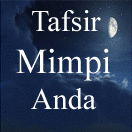The Oman or Hajar Mountains in northern Oman and the United Arab Emirates are located on
the northeastern margin of the Arabian plate, 60–120 miles
(100–200 km) from the active deformation front in the Gulf of
Oman between Arabia and the Makran accretionary wedge of
Asia. They are made up of five major structural units ranging
in age from Precambrian to Miocene. These include the pre-
Permian basement, Hajar Unit, Hawasina nappes, Semail ophiolite
and metamorphic sole, and post-nappe structural units.
The Hajar Mountains are up to 1.8 miles (3 km) high, displaying
many juvenile topographic features such as straight
mountain fronts and deep steep-walled canyons that may
reflect active tectonism causing uplift of these mountains. The
present height and ruggedness of the Hajar mountainous area
is a product of Cretaceous ophiolite obduction, Tertiary extension,
and rejuvenated uplift and erosion that initiated at the
end of the Oligocene and continues to the present. The Sayq
Plateau southwest of Muscat is 1.2–1.8 miles (2–3 km) in elevation.
Jabal Shams on the margin of the Sayq Plateau is the
highest point in Arabia, rising more than 1.8 miles (3 km) in
the central Hajar Mountains. The heights decrease gradually
northward reaching 1.2 miles (2 km) on the Musandam peninsula.
There the mountain slopes drop directly into the sea.
Pre-Permian basement is exposed mainly in the Jabal
Akhdar, Saih Hatat, and Jabal J’Alain areas. The oldest structural
unit includes a Late Proterozoic basement gneiss correlative
with the Arabian-Nubian Shield, overlain by a Late
Proterozoic/Ordovician volcano-sedimentary sequence. The
later is divided into the Late Proterozoic/Cambrian Huqf
Group, and the Ordovician Haima Group. The Huqf Group
is mainly composed of diamictites, siltstone, graywacke,
dolostone, and intercalated mafic volcanics. The Ordovician
Haima Group consists of a series of sandstones, siltstones,
quartzites, skolithos-bearing sandstones, and shales, interpreted
as subtidal to intertidal deposits.
The Hajar Unit represents the main part of the Permian/
Cretaceous Arabian platform sequence that formed on the
southern margin of the Neo-Tethys Ocean. These carbonates
form most of the rugged peaks of Jabal Akhdar, form a rim
around the southwestern parts of Saih Hatat, and continue in
several thrust sheets in the Western Hajar region. They are
well-exposed on the Musandam peninsula. The Hajar Unit
contains the Akhdar, Sahtan, Kahmmah, and Waisa Groups
of mainly carbonate lithologies, overlain by the Muti Formation
in the eastern Hajar, and the equivalent Ruus al Jibal,
Elphinstone, Musandam and Thamama Groups on the
Musandam peninsula.
The Hawasina nappes consist of a series of Late Permian/
Cretaceous sedimentary and volcanic rocks deposited in the
Hawasina basin, between the Arabian continental margin and
the open Neo-Tethys Ocean. The Hawasina nappes include the
Hamrat Duru, Al Aridh, Kawr, Umar Groups. Chaotic
deposits of the Baid Formation are interpreted as a foundered
carbonate platform. The Hamrat Duru Group includes radiolarian
chert, gabbro, basaltic and andesitic pillow lava, carbonate
breccia, shale, limestone and sandstone turbidites. The Al
Aridh Group contains an assemblage of basaltic andesite,
hyaloclastite and pillow lavas, micrites, pelagic carbonates,
carbonate breccias, chert, and turbidites. This is overlain by
the Kawr Group, which includes basalts, andesites, and shallow
marine carbonates. The Umar Group contains basaltic and
andesitic pillow lavas, cherts, carbonate breccias, and micrites.
The Semail nappe forms the largest ophiolitic sheet in
the world, and it is divided into numerous blocks in the
northern Oman Mountains. The Semail ophiolite contains a
complete classic ophiolite stratigraphy, although parts of it
are unusual in that it contains two magmatic sequences,
including upper and lower units. The upper magmatic unit
grades downward from radiolarian cherts and umber of the
Suhaylah Formation, to basaltic and andesitic pillow lavas
locally intruded by trondhjemites, through a sheeted diabase
dike unit, and into massive and layered gabbros, and finally
into cumulate gabbro, wehrlite, dunite, and clinopyroxenite.
This upper magmatic sequence grades down from basaltic
pillow lavas into a sheeted dike complex, through isotropic
then layered gabbros, then into cumulate gabbro and dunite.
The Mohorovicic discontinuity is well exposed throughout
the northern Oman Mountains, separating the crustal and the
mantle sequences. The mantle sequence consists of tectonized
harzburgite, dunite, and lherzolite, cut by pyroxenite dikes
and local chromite pods.
The metamorphic sole or dynamothermal aureole of
the Semail ophiolite formed through metamorphism of
rocks immediately under the basal thrust, heated and
deformed during emplacement of the hot allochthonous
sheets. In most places it consists of two units, including a
lower metasedimentary horizon and an upper unit of banded
amphibolites. The metamorphic grade increases upward
through the unit to upper amphibolite facies near the contact
with the Semail nappe.
Post-nappe units consist of Late Cretaceous and Tertiary
rocks. The Cretaceous Aruma Group consists of a lower unit
of Turonian-Santonian polymict conglomerate, sandstone,
and shale of the Qahlah Formation, and an upper unit of
Campanian-Maastrictian marly limestone and polymict breccia
(Thaqab Formation). The Tertiary Hadhramaut Group
comprises Paleocene to Eocene limestones, marly limestone,
dolostone, conglomerate, and sandstones that outcrop along
the southern edge of the Batinah coastal plain at the border
with the northeast flank of the Hajar Mountains.
Several levels of Quaternary fluvial terraces are preserved
along the flanks of the Hajar Mountains in Oman. These can
be divided in most places into an older lower cemented terrace
and an upper younger uncemented terrace group. The lower
cemented terrace is one of the youngest geological units that
we have been able to use as a time marker to place constraints
on the ages of structures. The terraces are younger than and
unconformably overlie most faults and folds, but in several
places faults and fracture intensification zones demonstrably
cut through the Quaternary terraces, providing some of the
best evidence for the young age of some of the faults described
here. These terraces grade both northward and southward
into coalesced alluvial fans forming bajada flanking the margins
of the mountains. The northern alluvial plains grade into
a narrow coastal plain along the Gulf of Oman.
The Oman (Hajar) Mountains are situated at the northeastern
margin of the Arabian plate. This plate is bounded to
the south and southwest by the active spreading axes of the
Gulf of Aden and Red Sea. On the east and west its border is
marked by transcurrent fault zones of the Owen Fracture Zone
and the Dead Sea Transform. The northern margin of the plate
is marked by a complex continent-continent to continentoceanic
collision boundary along the Zagros and Makran fold
and thrust belts.
Rocks of the Hajar Supergroup preserve a history of Permian
through Cretaceous subsidence of the Arabian Platform
on the margin of the Neo-Tethys Ocean. Formations that
now comprise the Hawasina nappes have biostratigraphic
ages of 260–95 Ma, interpreted to have been deposited on
the continental slope and in abyssal environments of the Neo-
Tethys Ocean. By about 100 Ma, spreading in the Neo-
Tethys generated the oceanic crust of the Semail ophiolite,
which was detached in the oceanic realm and thrust over
adjacent oceanic crust soon after its formation. Metamorphic
ages for the initiation of thrusting range from 105 Ma to 89
Ma. The ophiolitic nappes moved toward the Arabian margin,
forming the high-grade metamorphic sole during transport
and progressively scraping off layers of the Hawasina
sediments and incorporating them as thrust nappes to the
base of the ophiolite. The ophiolite reached the Arabian continental
margin and was thrust over it before 85–75 Ma as
indicated by greenschist facies metamorphism in the metamorphic
sole and by deformation of the Arabian margin sediments.
Initial uplift of the dome-shaped basement cored
antiforms of Jabal Akhdar and Saih Hatat may have been initiated
during the late stages of the collision of the ophiolite
with the Arabian passive margin and may have been localized
by preexisting basement horst and graben structures. The
location and geometry of these massive uplifts is probably
controlled by basement ramps. Uplift of these domes was
pronounced during the Oligocene/Miocene, as shown by tilting
of Late Cretaceous/Tertiary formations on the flanks of
the domes. Uplift of the domes may have begun in the
Oligocene, resulting from the propagation of a fault beneath
the southern limbs of the folds. The uplift of the domes
includes a complex history, involving several different events.
Some uplift of the domes continues at present, whereas much
of the Batinah coastal plain is subsiding.
In most of the Hajar Mountains, the Hawasina nappes
structurally overlie the Hajar Supergroup and form a belt of
north- or northeastward-dipping thrust slices. However, on
the southern margins of Jabal Akhdar, Saih Hatat, and other
domes, the Hawasina form south-dipping thrust slices. Major
valleys typically occupy the contact between the Hajar Supergroup
and the Hawasina nappes, because of the many, easily
erodable shale units within the Hawasina nappes. Several
very large (~10 km scale) allochthonous limestone blocks
known as the “Oman Exotics” are also incorporated into
mélange zones within the Hawasina nappes. These form
light-colored, erosionally resistant cuestas including Jabal
Kawr and several smaller mountains south of Al Hamra.
South and southwest of the belt of ophiolite blocks, sediments
of the Hamrat Duru Group are complexly folded and
faulted in a regional foreland-fold-thrust belt and then grade
into the Suneinah foreland basin. The Hamrat Duru rocks
include radiolarian cherts, micritic limestones, turbiditic
sandstones, shales, and calcarenite, all complexly folded and
thrust faulted in a 18.5-mile (30-km) wide fold/thrust belt.
A belt of regional anticlinal uplifts brings up carbonates
of the Hajar Supergroup in the central part of the basin, as
exposed at Jabal Salakh. These elongate anticlinal domes
have gentle to moderate dips on their flanks and are cut by
several thrust faults that may be linked to a deeper system.
This could be a blind thrust, or the folds could be flower
structures developed over deep strike-slip faults. South of the
Jabal Salakh fold belt, the surface is generally flat, covered by
Miocene/Pliocene conglomerates of the Barzaman Formation,
and cut by an extensive network of Quaternary channels of
the active alluvial plain.
Tertiary/Quaternary uplift of the northern Oman Mountains
may account for the juvenile topography of the area.
One of the best pieces of evidence for young uplift of the
Northern Oman Mountains comes from a series of uplifted
Quaternary marine terraces, best exposed in the Tiwi area
31–62 miles (50–100 km) southeast of Muscat. The uplift is
related to the contemporaneous collision between the northeastern
margin of the Arabian plate and the Zagros fold belt
and the Makran accretionary prism. The Hajar Mountains lie
on the active forebulge of this collision, and the fault systems
are similar to those found in other active and ancient forebulge
environments. The amount of Quaternary uplift, estimated
between 300 and 1,600 feet (100–500 m), is also
similar to uplift in other forebulge environments developed on
continental margins. This Quaternary uplift is superimposed
on an older, Cretaceous/Tertiary (Oligocene) topography.
See also CONVERGENT PLATE MARGIN PROCESSES;
OPHIOLITES.

















Tidak ada komentar:
Posting Komentar
Catatan: Hanya anggota dari blog ini yang dapat mengirim komentar.